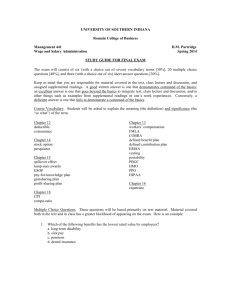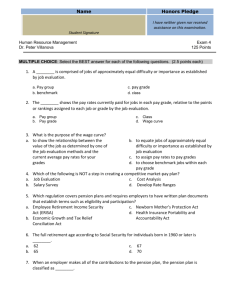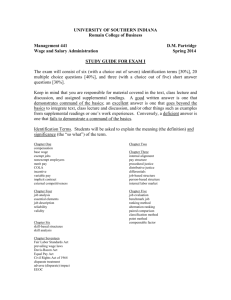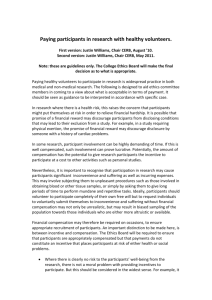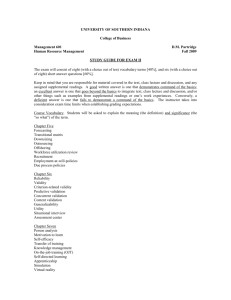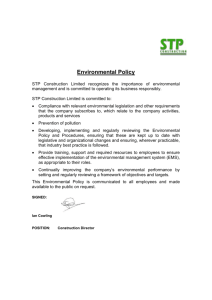Management 441 DM Partridge - University of Southern Indiana
advertisement
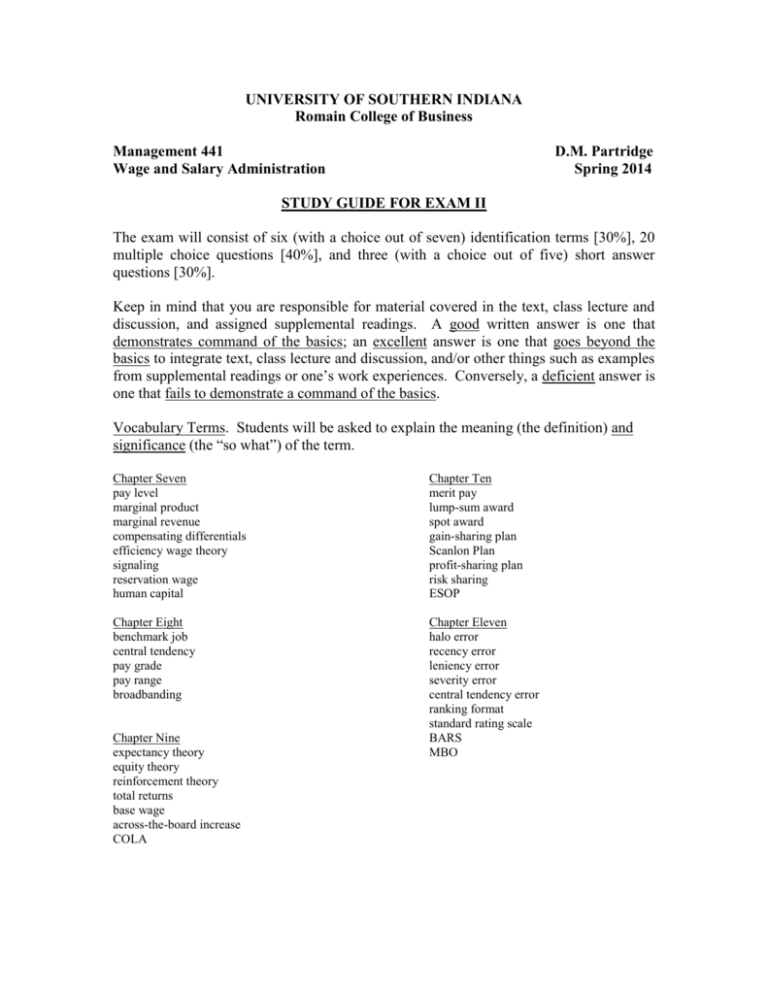
UNIVERSITY OF SOUTHERN INDIANA Romain College of Business Management 441 Wage and Salary Administration D.M. Partridge Spring 2014 STUDY GUIDE FOR EXAM II The exam will consist of six (with a choice out of seven) identification terms [30%], 20 multiple choice questions [40%], and three (with a choice out of five) short answer questions [30%]. Keep in mind that you are responsible for material covered in the text, class lecture and discussion, and assigned supplemental readings. A good written answer is one that demonstrates command of the basics; an excellent answer is one that goes beyond the basics to integrate text, class lecture and discussion, and/or other things such as examples from supplemental readings or one’s work experiences. Conversely, a deficient answer is one that fails to demonstrate a command of the basics. Vocabulary Terms. Students will be asked to explain the meaning (the definition) and significance (the “so what”) of the term. Chapter Seven pay level marginal product marginal revenue compensating differentials efficiency wage theory signaling reservation wage human capital Chapter Ten merit pay lump-sum award spot award gain-sharing plan Scanlon Plan profit-sharing plan risk sharing ESOP Chapter Eight benchmark job central tendency pay grade pay range broadbanding Chapter Eleven halo error recency error leniency error severity error central tendency error ranking format standard rating scale BARS MBO Chapter Nine expectancy theory equity theory reinforcement theory total returns base wage across-the-board increase COLA Multiple Choice Questions. These questions will be based primarily on text material. Material covered both in the text and in class has a greater likelihood of appearing on the exam. Here is an example: 1. In a perfectly competitive market, the supply curve facing the individual firm: A) is upward sloping. B) is horizontal. C) is downward sloping. D) does not intersect the demand curve. E) is inelastic. Short Answer Questions. objectives. These questions will be based on the chapter learning After reviewing Chapter 7, students should be able to: 1. Explain the importance of external competitiveness to the pay model. 2. Discuss the factors that influence external competitiveness. 3. Discuss the differences among labor market, product market, and organizational factors in determining external competitiveness. 4. Explain the different pay policy positions and the consequences of using each. After reviewing Chapter 8, students should be able to: 1. 2. 3. 4. 5. Identify the major decisions in establishing externally competitive pay. Discuss the importance of defining the relevant market in a pay survey. Explain the steps involved in designing a pay survey. Describe the key issues involved in interpreting the results of a pay survey. Explain how the market pay line combines the internal structure with external market rates. 6. Discuss the use of pay grades and pay ranges and their relationship to internal alignment and external competitiveness. 7. Discuss the pros and cons of the market pricing approach to establishing a pay structure. After reviewing Chapter 9, students should be able to: 1. Identify the four kinds of employee behaviors that can assist an organization in achieving its strategic objectives. 2. Discuss the relationship of the content theories of motivation to compensation. 3. Discuss the relationship of the process theories of motivation to compensation. 4. Explain why rewards, other than money, can influence employee behavior. 5. Summarize the key research evidence related to the role of compensation to motivate the four types of employee behaviors. 6. Describe the key design issues involved in creating an effective pay-for-performance program. After reviewing Chapter 10, students should be able to: 1. Discuss reasons for the popularity of pay-for-performance reward plans. 2. Describe the key differences among the categories – short-term, team-based, longterm – of pay-for-performance plans. 3. Identify the advantages and disadvantages of individual incentive plans. 4. Explain why an organization might choose a group rather than an individual incentive system. 5. Clarify the criteria involved in determining which type of group incentive plan best fits an organization’s objectives. 6. Identify the advantages and disadvantages of group incentive plans. After reviewing Chapter 11, students should be able to: 1. Summarize the key issues involved in defining and measuring employee performance. 2. Discuss the key components of the four strategies to better understand and measure performance. 3. Identify the several categories of performance appraisal formats and discuss the issues involved in determining which format would be the most appropriate to use. 4. Understand how raters process information and identify the major errors that can occur in this process. 5. Outline the key elements to maximize a good outcome in a performance management system. 6. Understand the legal issues affecting performance appraisals. 7. Explain the issues involved in designing merit pay guidelines to link pay to performance.
